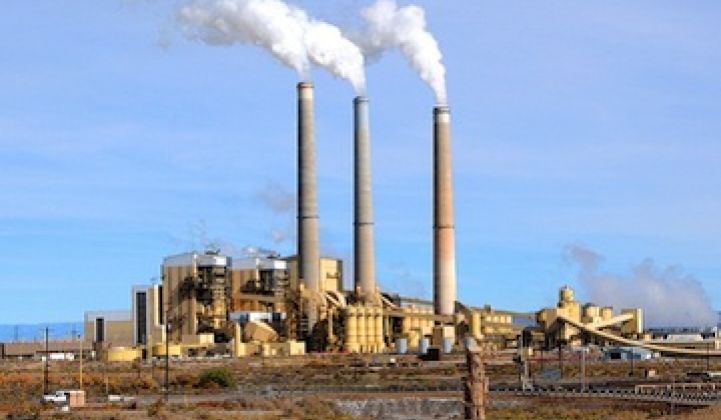Is it time to stick a fork in carbon capture and sequestration?
The case for CCS -- the process of grabbing the carbon produced from generating electricity from fossil fuels, and from a range of industrial processes -- has always been a little odd, predicated on the idea that it was unrealistic to expect immature and expensive clean energy technologies like solar and wind to shoulder the entire burden of reining in carbon emissions, particularly in developing countries.
Yet CCS is actually way behind wind and solar and renewables as a viable option -- and it’s falling further behind the timetable advocates had set for it to be a real factor in the climate-change fight, according to a new report.
The International Energy Agency has been counting on CCS to contribute 7 gigatons out of 42 gigatons in CO2 reductions under “2DS,” a least-cost scenario for keeping the global average temperature from rising more than that magic 2°C that climate people are always talking about. But with the passing of every new day, that scenario seems to get a little more shaky.
“To maintain the path to the 2°C target, the number of operational projects” -- eight are now operating and eight are under construction -- “must increase to around 130 by 2020, from the 16 currently in operation or under construction,” the Global CCS Institute said in its 2012 update of the technology’s progress. “Such an outcome looks very unlikely as only 51 of the 59 remaining projects captured in the Global CCS Institute’s annual project survey plan to be operational by 2020, and inevitably some of these will not proceed.”
So instead of 130 by 2020, we’re looking at maybe 51.
That’s why the institute concluded, “It is clear a very substantial increase in new projects needs to occur if the IEA scenario for CCS is to be met.”
Now, to be sure, the IEA is a big advocate for deployment of more renewables. But it’s hard not to wonder if its continued advocacy of CCS makes sense, given how scarce investment dollars are likely to be in the years ahead. It’s really expensive to get the carbon out of a coal plant flue, compress it to a supercritical state and send it underground to a spot that has been adequately studied to determine it can hold the stuff.
It’s enough to make you think the Congressional Budget Office might have been right earlier this year when it concluded that the big investment the U.S. is making in CCS -- $6.9 billion since 2005 -- probably won’t bear much fruit. That is, unless Washington suddenly develops a spine and “impose[s] costs -- for example, through a tax on carbon -- on users of electricity whose generation releases greenhouse gases (thereby making CCS more competitive), or experiment[s] with different types of electricity production subsidies that would provide more incentive for private-sector investments in CCS.”
We’ll let you be the judge of how likely that is.
***
Editor's note: This article is reposted in its original form from EarthTechling. Author credit goes to Pete Danko.



